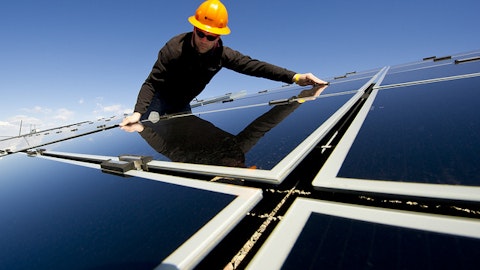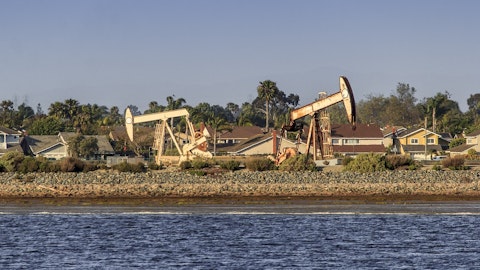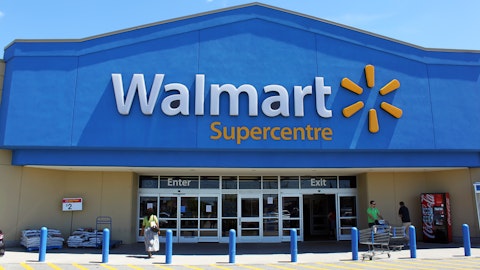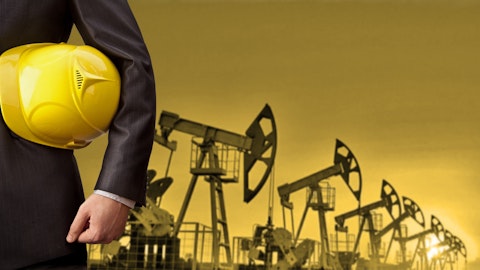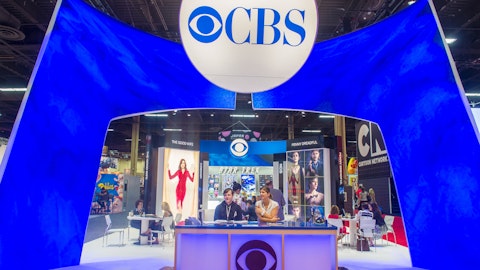Chevron Corporation (NYSE:CVX) is certainly in a much better financial position than other companies in the oil and gas industry and could continue to increase debt levels higher for a considerable amount of time.
However, this is our least preferred method for funding the dividend because it lowers the equity value of the business, increases balance sheet risk, and makes the company even more dependent on fickle financial markets.
Earlier this year Moody’s downgraded (5) the senior unsecured ratings of Chevron from Aa2 to Aa1. The basis of the downgrade was their expectations for continued negative free cash flow and rising debt levels through 2016 and 2017 due to low oil prices.
Our best guess is that as long as debt capital markets continue to be available and the dividend is management’s #1 priority, Chevron can continue to fund it.
However, if capital markets freeze and the oil and gas environment remains challenging beyond the next year or so, management will have to cut the dividend to preserve the company.
Dividend Growth Analysis
Our Growth Score answers the question, “How fast is the dividend likely to grow?” It considers many of the same fundamental factors as the Safety Score but places more weight on growth-centric metrics like sales and earnings growth and payout ratios. Scores of 50 are average, 75 or higher is very good, and 25 or lower is considered weak.
Chevron’s Dividend Growth Score is 3, which indicates that the dividend has very poor growth potential.
The company has raised its dividend for 28 straight years, but an increase this year would mean that Chevron has to borrow even more money to fund the increase rather than boosting the payout due to rising cash flow.

Source: Simply Safe Dividends
Chevron’s CFO commented on how they are thinking about keeping the dividend growth streak alive:
“What I can say is that we’re fully aware of the 28-year annual dividend payment increase. We’re also fully aware that an increase needs to occur in 2016 if we are to keep that pattern alive. The board fully understands the value of the dividend increase and they understand the value of growing the dividend over time. So the board will be looking at cash generation and our ability from a sustainability sense to support a higher dividend going forward.”
Source: Seeking Alpha
She continued:
“I guess I would just reiterate. We do see our cash flow circumstance improving over time here. We’ve got the confidence in our future growth, in production. We’ve got confidence in our future cash generation. I’ll take you back to the $2 per barrel margin increase that we showed at the Security Analyst Day on the portfolio. Assuming flat commodity prices, that’s the margin accretion that we get out of these LNG projects predominantly. It raises the cash margin on the entire portfolio. And we also believe that we can compete very successfully and sustainably over time here with a much lower capital program because we’ve got assets, for example, like the Permian and other unconventionals. So we feel very comfortable about what our future holds.”
Source: Seeking Alpha
Simply put, if oil prices increase, then Chevron can probably continue to increase the dividend at a low rate. However, if oil prices are stable to declining, it will be very difficult to sustainably increase the dividend without just borrowing more to fund the increase. We believe this to be a risky capital allocation decision and puts the value of the company at risk.
Investors should not count on substantial future dividend increases unless the price of oil moves substantially higher.
Valuation
Chevron currently trades at over 70x 2016 expected earnings and roughly 19x 2017 estimates.
Future profits for the company are very difficult to forecast because they are not only predicated on management executing on their strategy of production growth and lowering the cost structure, but most important is the price of oil.
Control of the global oil market is somewhat up for grabs over the next five years, and it’s not out of the question that prices remain below $55 per barrel for at least the next 1-2 years.
Since we don’t believe we can accurately forecast the most important driver for the company, we cannot predict a normalized earnings growth rate.
All we can say is that an investor must have a positive viewpoint on oil prices, Chevron’s capital allocation decisions, and the company’s financial strength in order to make an investment in the stock.
